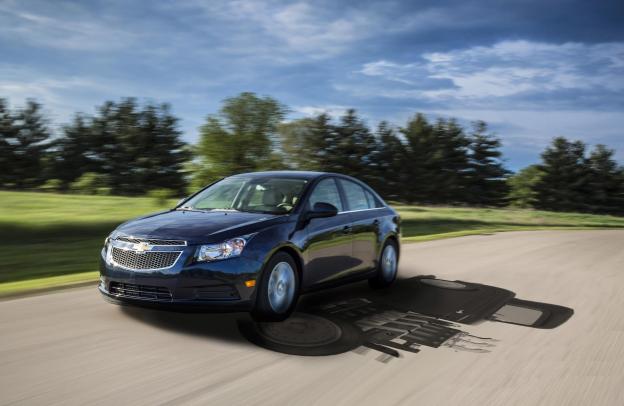
Chevrolet is making a big push – no pun intended – to promote the benefits of its turbocharged Cruze Diesel model. In a recent press release, Chevy promotes the “overboost” function, which produces more torque from a four-cylinder than that of some early 1970s pony cars.
The 2.0-liter turbocharged four-cylinder diesel engine produces 151 horsepower and 264 pound-feet of torque. When overboost is engaged, however, torque jumps up to 280 pound-feet for 10 seconds. This allows the Cruze Diesel to make a 0 – 60mph run in 8.6 seconds, which is a half second faster than the Volkswagen Jetta TDI.
“Overboost provides increased performance when the driver demands it, like when passing on the highway,” said Mike Siegrist, General Motors’ 2.0-liter diesel assistant chief engineer, in a prepared statement. “When the driver leans on the throttle, the turbocharger increases the air and fuel intake over and above what the engine needs for normal torque demand.”
Chevy is quick to point out that the 280 foot-pounds of additional torque is more than that of the 1972 Camaro Z/28, which was powered by a 5.7-liter gasoline V8. As a side note, the release refers to the Camaro as a muscle car, when it was actually a pony car. ‘Muscle Car’ is a term saved for big-bodied performance machines where as ‘Pony Car’ referred to compact cars like the Camaro and Mustang. GM should know that.
Unlike the approximate four mpg that the ’72 Z/28 achieved with its torque-y V8, the Cruze Diesel is capable of 46mpg on the highway.
The Cruze Diesel is one of the first diesel-powered passengers cars GM has produces since its monstrous 350 diesel engine of the 1970s, which was so loud, smokey, and unreliable it virtually ruined diesel’s reputation in the U.S. forever. Luckily for diesel fans and those that want to save money at the pump, the efficiently burning fuel is making a comeback.


